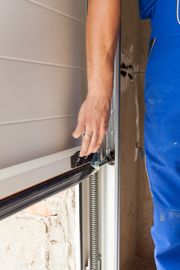A Guide to Torsion & Extension Garage Door Springs

Most garage doors use one of two types of springs: torsion or extension. Though each performs differently and has its own advantages, both play the integral role of opening and closing garage doors. Here’s more about what differentiates torsion and extension springs.
What’s the Difference Between Torsion & Extension Springs?
Torsion
Torsion springs are located directly above the interior of your garage doors. They use cones to connect to metal tubes on each end, which assist with the circular motion that opens and closes the doors. Since these springs do not expand or contract, they’re considered safer because they won’t fly and hit objects or people if they break.
These springs also operate smoothly and quietly. They are durable and typically last between 15,000 and 20,000 door cycles. They’re also available in versions that have protective coatings designed to prevent breakage and are guaranteed to last a lifetime.
Extension
 Extension springs are located on the sides of your garage doors. They have end loops that connect to pulleys, which help the springs expand and contract, thereby raising and lowering the doors. To make extension springs safer, install safety cables that prevent them from becoming projectiles if they break.
Extension springs are located on the sides of your garage doors. They have end loops that connect to pulleys, which help the springs expand and contract, thereby raising and lowering the doors. To make extension springs safer, install safety cables that prevent them from becoming projectiles if they break.
Extension springs are popular for residential garage doors because they’re inexpensive and easy to install. With routine inspections and maintenance, they should last at least 10,0000 door cycles, or about seven years.
The next time you need spring replacements for your garage doors, get in touch with Garage Door Service: Paul Holscher, Mike Panaro. For nearly 40 years, these contractors have provided garage door repairs, parts, and maintenance to clients throughout the Cincinnati, OH, area. Call (513) 347-3000 to get a quote on residential or commercial overhead doors and book an appointment. Visit the website to learn more about openers, springs, and customization services.
About the Business
Have a question? Ask the experts!
Send your question

